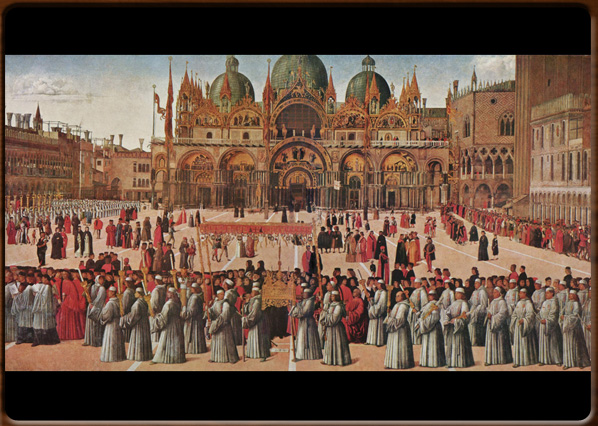Gentile Bellini (Venice, 1429-1507) was an important painter in the second half of the 15th Century.
Having learnt in his father Jacopo’s workshop, he rapidly became gained a good reputation in Venice and was entrusted with the restoration of Antonio Pisanello and Gentile da Fabriano’s frescoes.
Influenced by Andrea Mantegna and then his brother Giovanni Bellini, he was a good portrait artist, as can be seen in his profiles of Beato Lorenzo Giustiniani (1465, Gallerie dell’Accademia, Venice) and Maometto II (1479-80, The National Gallery, London) when sent to Constantinople by the Venetian government.
He was a good observer, including many rich details in his works, such as the three large “teleri” in the Sala della Croce at the Scuola di San Giovanni Evangelista: Procession in St. Mark’s Square (1496), Miracle of the Cross (1500), Miraculous Healing (1501), plus his St. Mark the Preacher (1504-07), completed by his brother Giovanni and now in the Pinacoteca di Brera, Milan.
Unlike his brother, Gentile Bellini had little interest in the new Tuscan style, preferring to interpret Venice in the 1400s with a still clearly Gothic sensitivity consisting of faithful reproduction of details, though frozen in a time and shown under a transparent light.



